I. Introduction
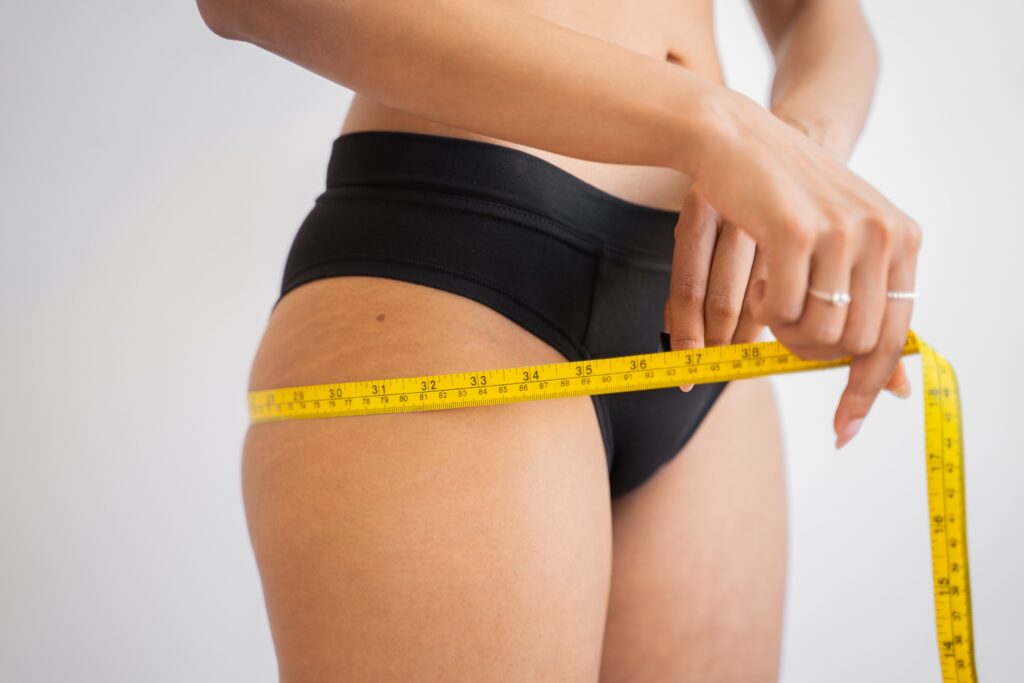
Are you looking to reduce thigh fat at home and achieve toned legs without stepping foot outside your home? If so, you’ve come to the right place. Losing thigh fat is a common goal for many individuals, and with a combination of targeted exercises, a healthy diet, and consistency, you can make significant progress right from the comfort of your own home to reduce thigh fat at home. In this guide, we will explore effective strategies and exercises specifically tailored to help to reduce thigh fat at home and sculpt leaner, more defined legs. So let’s dive in and discover how to embark on your journey towards slimmer thighs, all within the convenience of your home environment.
A. importance of addressing thigh fat at home

Addressing thigh fat holds significant importance for both physical and mental well-being. Excess fat accumulation in the thigh region not only affects our body’s appearance but can also have implications for our overall health. One key reason to reduce thigh fat at home is to reduce the risk of various health conditions associated with obesity. Excessive fat in the thighs is often an indicator of overall excess body fat, which can contribute to serious health issues such as heart disease, diabetes, and high blood pressure. By actively working to reduce thigh fat at home, we can potentially improve our cardiovascular health and reduce the risk of these diseases.
Beyond the physical health benefits, addressing thigh fat also plays a vital role in boosting self-confidence and enhancing body image. Many individuals struggle with body insecurities, particularly concerning their lower body shape and size to reduce thigh fat at home. Targeting thigh fat can help individuals feel more comfortable and confident in their own skin. Achieving toned and sculpted thighs can lead to an improved sense of self-esteem and body satisfaction, empowering individuals to embrace their bodies and feel more confident in various aspects of their lives.
Furthermore, focus to reduce thigh fat at home can positively impact our mobility and functional abilities. Excessive fat in the thigh area can make simple daily activities such as walking, climbing stairs, or engaging in physical exercises more challenging. By reducing thigh fat, we can enhance our overall physical performance, flexibility, and agility. This can translate into improved quality of life, allowing us to participate in activities and hobbies with greater ease and enjoyment.
In summary, addressing thigh fat is not solely about achieving aesthetic goals; it carries profound importance for our overall health, self-confidence, and functional abilities. By shedding excess thigh fat, we can minimize the risk of chronic diseases, boost our self-esteem, and enhance our physical capabilities. So, let’s embrace the journey of losing thigh fat, knowing that it holds numerous benefits for our holistic well-being.
B. Benefits of losing thigh fat at home

Losing thigh fat at home offers a range of benefits that extend beyond just physical appearance. Engaging in targeted exercises and healthy habits within the comfort of your own home can have a significant impact on your overall well-being. Let’s explore the benefits to reduce thigh fat at home.
First and foremost, shedding thigh fat can contribute to improved physical health. Excess fat accumulation in the thighs is often associated with an increased risk of cardiovascular diseases, diabetes, and high blood pressure. By focusing on to reduce thigh fat at home, you can reduce these risks and improve your overall cardiovascular health. Regular exercise and a healthy diet, key components to reduce thigh fat at home, can help strengthen your heart, improve blood circulation, and lower blood pressure, leading to a healthier and more resilient body.
Moreover, losing thigh fat can enhance your mobility and flexibility. Carrying excess weight in the thighs can make simple movements and activities more challenging. By slimming down your thighs, you can improve your range of motion, making everyday tasks like walking, running, and climbing stairs easier and more comfortable. Increased mobility can also lead to a higher level of independence and an improved quality of life.
Another benefit of losing thigh fat at home is the positive impact on mental well-being. Engaging in regular physical activity releases endorphins, the “feel-good” hormones, which can elevate your mood, reduce stress, and alleviate symptoms of anxiety and depression. Achieving your thigh fat loss goals can boost your self-confidence and body image, resulting in improved self-esteem and a more positive outlook on life.
Additionally, process to reduce thigh fat at home allows for convenience and flexibility in your fitness routine. You have the freedom to choose the exercises and workouts that suit your preferences and schedule. Whether it’s following online workout videos, incorporating strength training, or trying out yoga or Pilates, you have the autonomy to design a fitness plan that works best for you. This flexibility eliminates the need to commute to a gym or adhere to rigid class schedules, making it easier to maintain consistency and achieve long-term results.
In summary, losing thigh fat at home offers a multitude of benefits for both your physical and mental well-being. From reducing the risk of chronic diseases and improving mobility to boosting self-confidence and providing convenience, embarking on a thigh fat loss journey from home can empower you to live a healthier, more fulfilling life. So, embrace the opportunity to transform your thighs and enjoy the many advantages it brings.
II. Understanding Thigh Fat

Understanding thigh fat is crucial to reduce thigh fat at home. Thigh fat refers to the accumulation of adipose tissue in the thighs, which can vary in composition and distribution among individuals. There are two primary types of thigh fat: subcutaneous fat and visceral fat. Subcutaneous fat lies directly beneath the skin, while visceral fat surrounds the organs deeper within the body.
Genetics play a significant role in determining how and where fat is distributed in the body, including the thighs. Women tend to have a higher predisposition to store fat in their thighs due to hormonal factors, while men typically accumulate more fat in the abdominal area. Hormonal changes during puberty, pregnancy, and menopause can also affect the distribution of fat in the thighs can make challenging to reduce thigh fat at home.
The accumulation of thigh fat can be influenced by various factors, including diet, physical activity levels, and overall body composition. Consuming a diet high in calories and unhealthy fats, combined with a sedentary lifestyle, can contribute to an increase in thigh fat. On the other hand, maintaining a balanced diet, engaging in regular exercise, and incorporating strength training can help reduce thigh fat and build lean muscle.
It is important to note that spot reduction, which refers to targeting fat loss in specific areas of the body, is not possible through exercise alone. Losing thigh fat requires an overall reduction in body fat through a combination of cardiovascular exercises, strength training, and a calorie-controlled diet. By adopting a holistic approach to fitness and focusing on overall fat loss, it is possible to achieve a slimmer and more toned appearance in the thigh area.
A. Causes and factors contributing to thigh fat

There are several causes and factors that contribute to the accumulation of thigh fat in individuals. Understanding these underlying causes can help us to reduce thigh fat at home.
One of the primary factors contributing to thigh fat is genetics. Our genetic makeup plays a significant role in determining our body shape and where we tend to store fat. Some individuals may have a genetic predisposition to store more fat in their thighs, while others may store it in different areas of the body.
Hormonal factors also influence the distribution of fat in the thighs. Women, in particular, may experience an increased deposition of fat in the thigh region due to hormonal changes during puberty, pregnancy, and menopause. These hormonal fluctuations can lead to alterations in fat storage patterns.
Diet and lifestyle choices play a crucial role in the development of thigh fat. Consuming a diet high in calories, saturated fats, and refined carbohydrates can contribute to overall weight gain, including the accumulation of fat in the thighs. Additionally, leading a sedentary lifestyle with minimal physical activity can lead to decreased calorie expenditure and an increased likelihood of storing fat in the thighs.
Age is another factor that can contribute to the development of thigh fat. As we age, our metabolic rate tends to slow down, resulting in a reduced calorie burn. This can lead to an increased propensity for weight gain and the accumulation of fat in various areas, including the thighs.
In summary, a combination of genetic factors, hormonal changes, diet, lifestyle choices, and age can contribute to the development of thigh fat. Recognizing and addressing these underlying causes can help individuals make informed decisions regarding their diet, exercise, and lifestyle habits to reduce thigh fat at home effectively.
B. Differentiating between subcutaneous and visceral fat
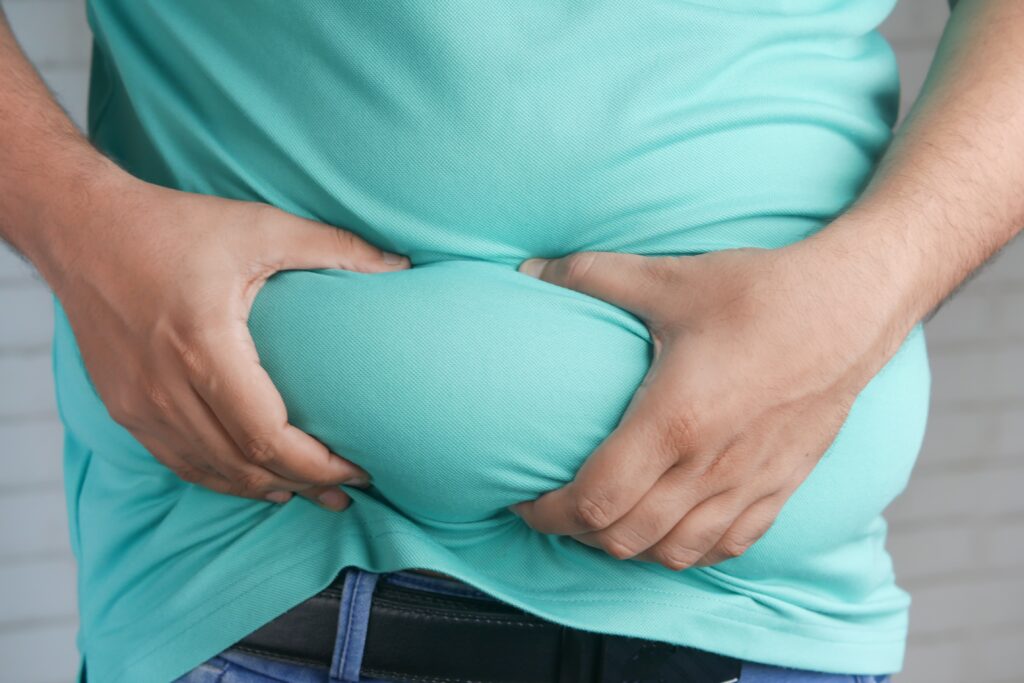
When discussing fat in the body, it is important to differentiate between two primary types: subcutaneous fat and visceral fat. These two types of fat differ in their location, distribution, and potential health implications. Subcutaneous fat is located just beneath the skin. It is the fat that is visible and can be pinched or felt. Subcutaneous fat is found throughout the body, including the thighs, abdomen, arms, and buttocks. While subcutaneous fat can contribute to a person’s overall body shape and appearance, it is generally considered less harmful to health compared to visceral fat.
Visceral fat, on the other hand, is located deeper within the abdominal cavity, surrounding vital organs such as the liver, pancreas, and intestines. It cannot be seen or felt from the outside. Visceral fat is metabolically active and can have a more significant impact on health. Excessive amounts of visceral fat have been associated with an increased risk of various health conditions, including heart disease, type 2 diabetes, and certain types of cancer.
Distinguishing between subcutaneous and visceral fat is important because it helps to understand the potential health risks associated with excess fat in different areas of the body. While subcutaneous fat may primarily impact body aesthetics, visceral fat poses greater concerns for overall health. It is crucial to adopt a holistic approach that includes both diet and exercise to manage and reduce both types of fat and maintain a healthy body composition.
III. Creating a Calorie Deficit

Creating a calorie deficit is a fundamental concept in weight loss and is essential for losing thigh fat. It involves consuming fewer calories than your body needs, forcing it to tap into stored fat for energy. By consistently maintaining a calorie deficit, you can effectively shed excess fat, that help you to reduce thigh fat at home.
To create a calorie deficit, it is crucial to monitor your daily caloric intake. Start by calculating your total daily energy expenditure (TDEE), which considers factors such as your age, weight, height, and activity level. Once you have determined your TDEE, you can create a calorie deficit by consuming fewer calories than this calculated value.
Reducing your caloric intake can be achieved through various strategies. Firstly, focus on consuming nutrient-dense foods that are lower in calories but rich in essential nutrients. Incorporate plenty of vegetables, lean proteins, whole grains, and healthy fats into your meals. These foods tend to be more filling and provide greater satiety, helping you stay satisfied with fewer calories.
Portion control is another crucial aspect of creating a calorie deficit to reduce thigh fat at home. Be mindful of your serving sizes and practice moderation. Consider using smaller plates and bowls to visually trick yourself into feeling more satisfied with less food. Additionally, be mindful of high-calorie beverages and sugary snacks, as they can quickly add up in terms of calorie intake.
While creating a calorie deficit is important, it is essential to do so in a healthy and sustainable manner. Aim for a moderate calorie deficit of around 500-1000 calories per day, as overly restrictive diets can be detrimental to your overall well-being. Remember to listen to your body’s hunger and fullness cues and make gradual, long-term changes to your eating habits for sustainable results.
In summary, creating a calorie deficit is a key strategy for losing thigh fat. By consuming fewer calories than your body needs, you can tap into stored fat for energy and gradually slim down your thighs. Focus on nutrient-dense foods, practice portion control, and adopt a sustainable approach to achieve a healthy calorie deficit and successfully reach your thigh fat loss goals.
A. Importance of a calorie deficit for fat loss
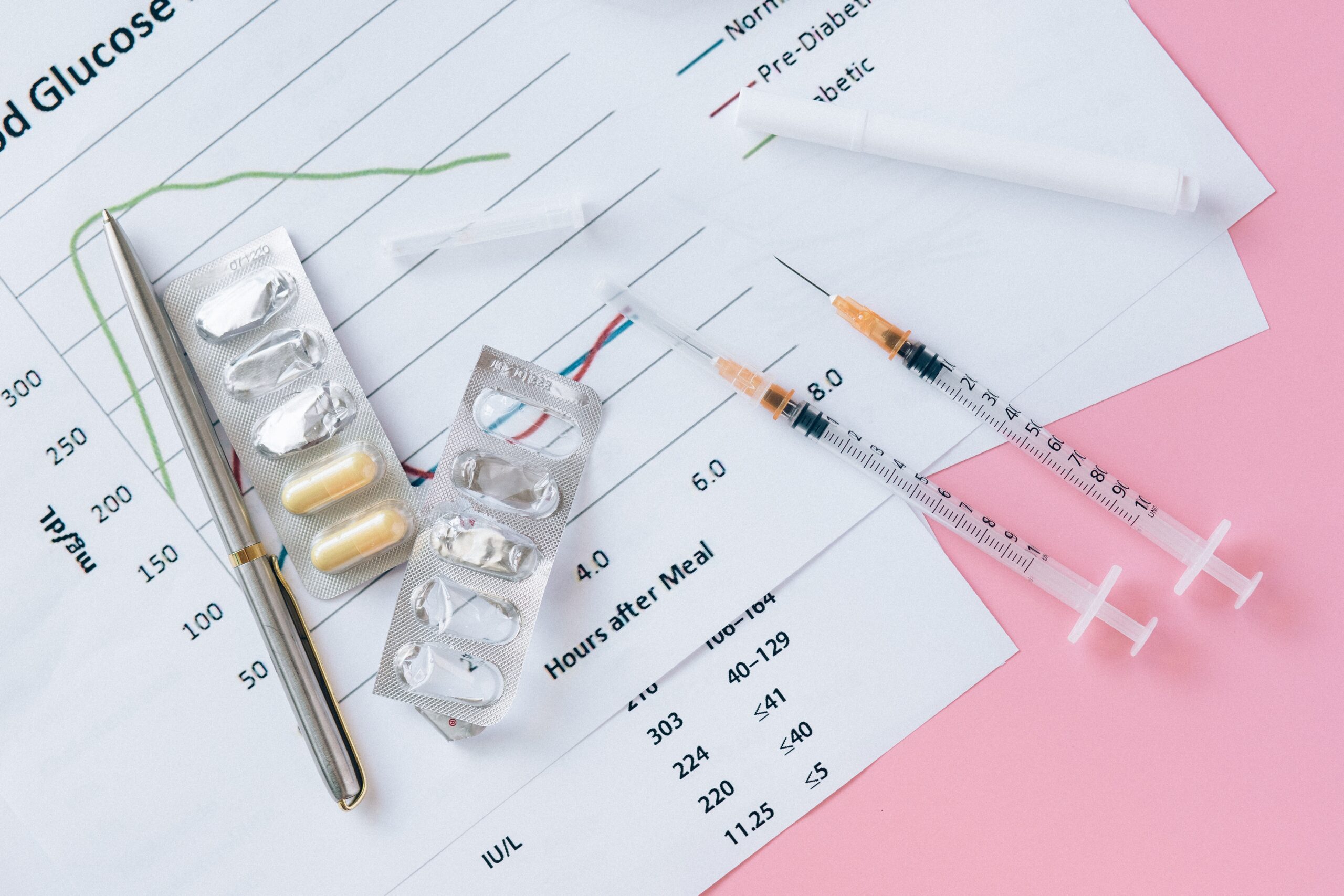
The importance of a calorie deficit for fat loss cannot be overstated in the journey to reduced the thigh fat at home. It serves as a fundamental principle in achieving weight loss goals, including the reduction of thigh fat. A calorie deficit occurs when you consume fewer calories than your body requires for daily energy expenditure. This deficit prompts the body to utilize stored fat as an energy source, ultimately leading to fat loss.
Creating a calorie deficit is crucial because it addresses the fundamental principle of energy balance. When we consume more calories than our bodies need, the excess energy is stored as fat. By reversing this equation and consuming fewer calories, we force our bodies to tap into these stored fat reserves. This process is vital for losing thigh fat because it specifically targets and reduces fat accumulation in that area.
In addition to promoting fat loss, a calorie deficit also helps regulate overall body weight and improves body composition. By consistently maintaining a calorie deficit, individuals can achieve a gradual and sustainable weight loss over time. This not only leads to a slimmer physique but also contributes to overall health improvement and reduced risk of chronic diseases associated with excess body fat.
It is worth noting that a calorie deficit should be approached with caution and balance. It is important to ensure that the deficit is reasonable and sustainable, as overly restrictive diets can have negative effects on metabolism and overall well-being. It is recommended to consult with a healthcare professional or registered dietitian to determine an appropriate and individualized calorie deficit for safe and effective fat loss.
In summary, a calorie deficit plays a pivotal role in fat loss, including the reduction of thigh fat. By consuming fewer calories than our bodies require, we initiate the process of utilizing stored fat for energy. This principle, when implemented wisely and sustainably, can lead to successful fat loss, improved body composition, and overall health benefits.
B. Calculating daily calorie needs

Calculating daily calorie needs is an essential step in maintaining a healthy and balanced diet. The daily calorie requirement varies for each individual based on factors such as age, gender, weight, height, activity level, and overall goals. To determine an approximate calorie intake, one can use the Harris-Benedict equation, which takes into account basal metabolic rate (BMR) and activity level. BMR represents the energy required to sustain basic bodily functions at rest, while the activity level factor considers the calories burned through physical activity. By multiplying the BMR by the appropriate activity factor, one can estimate the number of calories needed per day.
However, it is important to note that this calculation provides a rough estimate, and other factors like genetics and body composition can also impact individual calorie needs. Consulting with a registered dietitian or healthcare professional can provide personalized guidance for establishing an appropriate calorie intake to support overall health and specific goals.
C. Implementing a balanced and nutritious diet

Implementing a balanced and nutritious diet is crucial for maintaining optimal health and well-being. Such a diet should include a variety of nutrient-rich foods from all food groups. A balanced diet typically consists of whole grains, lean proteins, healthy fats, fruits, and vegetables. Whole grains provide essential carbohydrates, fiber, and B vitamins, while lean proteins offer amino acids necessary for growth and repair also help to reduce thigh fat at home. Healthy fats, like those found in avocados and nuts, contribute to brain function and heart health.
Fruits and vegetables are abundant sources of vitamins, minerals, antioxidants, and dietary fiber. It is important to moderate the intake of added sugars, sodium, and unhealthy fats, which are often found in processed foods. Portion control is also crucial to prevent overeating and maintain a healthy weight. Regular hydration is essential, and water should be the primary beverage of choice. By adopting a balanced and nutritious diet, individuals can ensure they receive the necessary nutrients for optimal functioning and reduce the risk of chronic diseases. Consulting with a registered dietitian can provide further guidance and personalized recommendations based on specific dietary needs and goals.
IV. Incorporating Cardiovascular Exercises
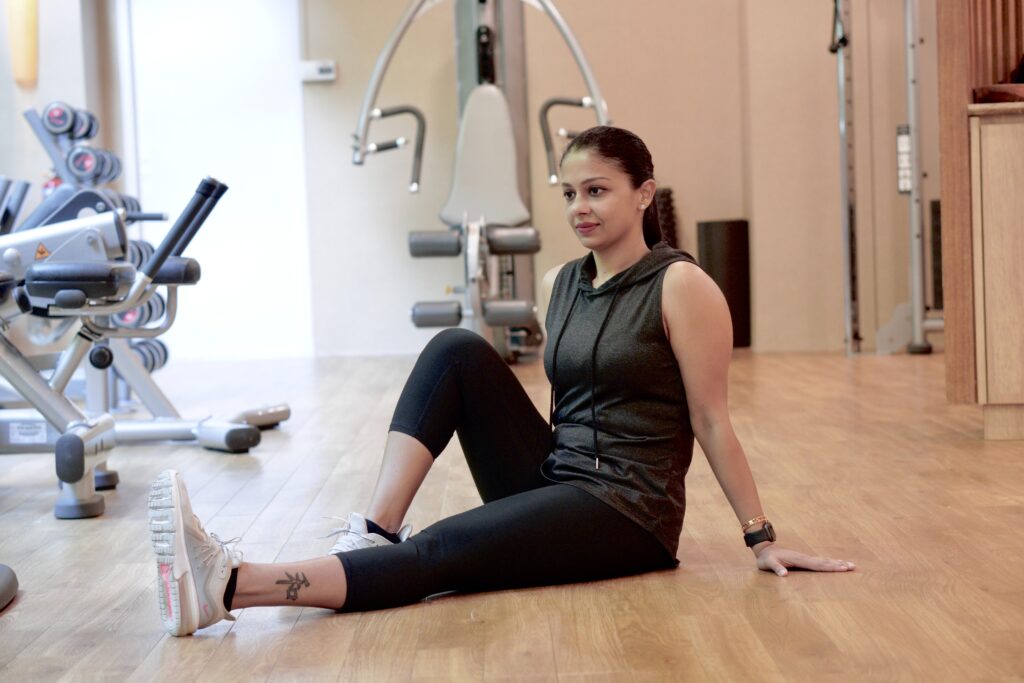
Incorporating cardiovascular exercises into a regular fitness routine is vital for improving cardiovascular health and to reduce thigh fat at home. Cardiovascular exercises, also known as aerobic exercises, are activities that elevate the heart rate and increase breathing for an extended period. These exercises engage large muscle groups and help improve endurance, lung capacity, and circulation. There are various forms of cardiovascular exercises to choose from, such as jogging, cycling, swimming, dancing, or using cardio machines like treadmills or elliptical.
The American Heart Association recommends at least 150 minutes of moderate-intensity aerobic activity or 75 minutes of vigorous-intensity aerobic activity per week, spread across several days. By regularly incorporating cardiovascular exercises, individuals can strengthen their heart and lungs, lower blood pressure, reduce the risk of chronic diseases like heart disease and diabetes, manage weight, and boost mood and mental well-being. It is important to start gradually, listen to the body’s cues, and consult with a healthcare professional before beginning any new exercise program, especially for those with pre-existing health conditions.
A. Benefits of cardio exercises for thigh fat loss
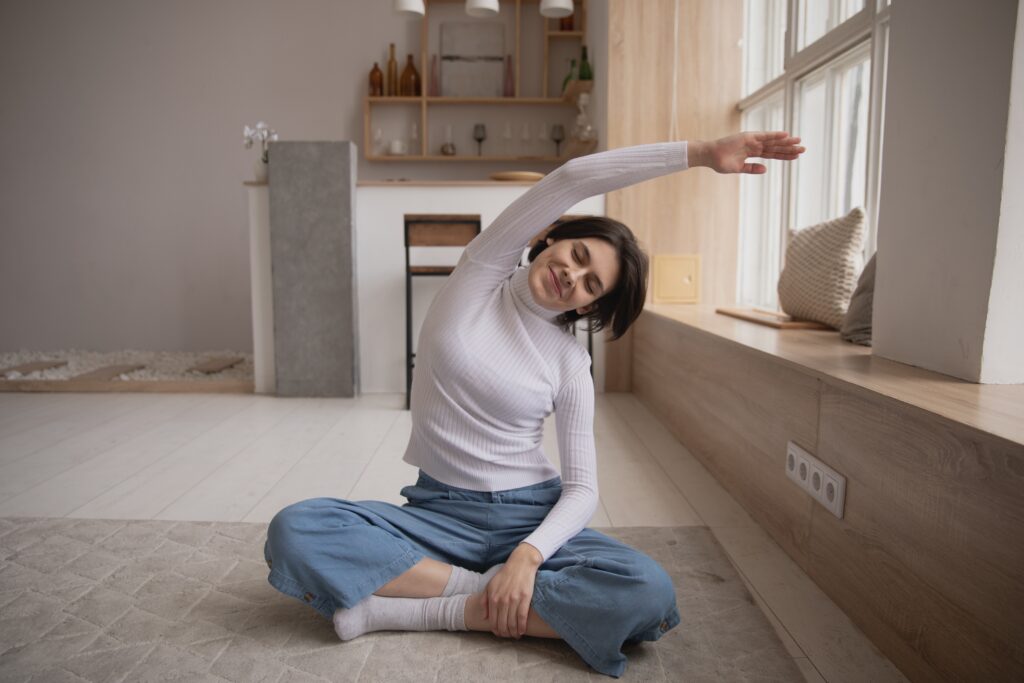
Engaging in cardio exercises can offer several benefits when it comes to reduce thigh fat at home. Cardiovascular exercises, such as running, cycling, and stair climbing, are effective at burning calories and promoting overall weight loss. While spot reduction is not possible, cardio exercises can contribute to reducing overall body fat, including fat stored in the thighs. These exercises increase heart rate and stimulate the metabolism, leading to a higher caloric expenditure and a potential reduction in body fat percentage.
Moreover, cardio exercises improve blood circulation, which can enhance the mobilization and utilization of stored fat as an energy source. As a result, regular cardio workouts can help slim down the thighs, increase muscle tone, and improve overall leg definition. It is important to combine cardiovascular exercises with a balanced diet and strength training exercises for optimal results. Building lean muscle through strength training can further contribute to a toned appearance by increasing basal metabolic rate and promoting fat burning even at rest. Remember to consult with a fitness professional or healthcare provider to determine the most suitable cardio exercises and intensity levels based on individual fitness levels and goals.
B. Examples of effective cardio exercises at home
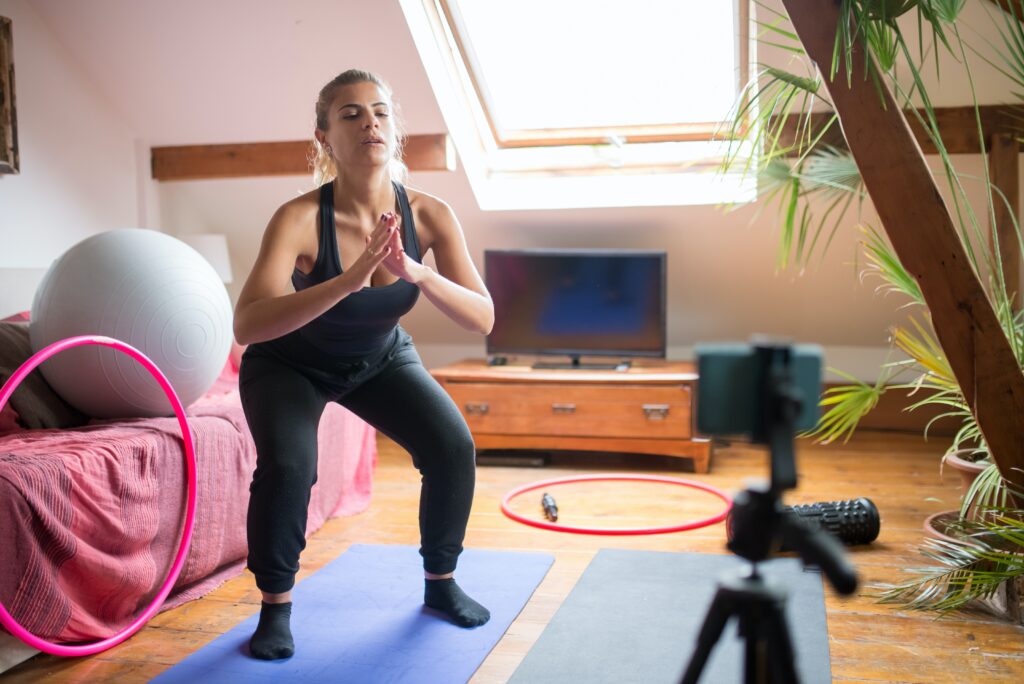
There are numerous effective cardio exercises that can be performed at home, providing an excellent way to improve cardiovascular fitness and burn calories. One popular option is jumping rope, which requires minimal space and equipment. It is a high-intensity exercise that engages the entire body and can quickly elevate the heart rate. Another effective exercise is high knees, where one can jog in place while lifting the knees as high as possible. This exercise targets the lower body, including the thighs, while also increasing the heart rate. Burpees are a challenging yet effective full-body cardio exercise that combines squats, push-ups, and jumps. They provide a great cardiovascular workout, targeting multiple muscle groups simultaneously.
Mountain climbers are another intense exercise that targets the core, arms, and legs. This exercise involves assuming a push-up position and alternating bringing the knees towards the chest in a running motion. Finally, a simple but effective cardio exercise is marching or jogging in place. This exercise is accessible to all fitness levels and can be modified to increase intensity by adding arm movements or higher knee lifts. These examples demonstrate that there are plenty of effective cardio exercises that can be performed at home with little to no equipment, making it convenient for individuals to maintain their fitness routine regardless of their schedule or access to a gym.
V. Targeted Leg Exercises

Targeted leg exercises are specifically designed to strengthen and tone the muscles in the lower body, including the thighs, glutes, calves, and hamstrings. These exercises focus on building muscle strength, improving stability, and enhancing overall leg aesthetics. Squats are a highly effective leg exercise that engages multiple muscle groups simultaneously. They primarily target the quadriceps, hamstrings, and glutes while also activating the core. Lunges are another beneficial exercise for the legs, which involve stepping forward or backward and bending the knees to create a lunge position. This exercise targets the quadriceps, hamstrings, and glutes, while also engaging the calf muscles for stability. Step-ups are excellent for working the thighs and glutes. By stepping onto a raised platform and then stepping down, the muscles in the legs are engaged to lift the body weight. Additionally, leg presses, leg curls, and calf raises can be performed using gym equipment or resistance bands to further target specific leg muscles. These targeted leg exercises not only help build strength and muscle tone but also contribute to improved functional movements and overall lower body stability. It is important to perform these exercises with proper form, gradually increase intensity, and allow for adequate rest and recovery to avoid injury and optimize results. Consulting with a fitness professional can provide guidance on proper technique and suitable exercise variations based on individual fitness levels and goals.
A. Importance of targeted exercises for toning thighs

Targeted exercises for toning thighs play a significant role in sculpting and strengthening the leg muscles, contributing to a more defined and toned appearance. While spot reduction is not possible, focusing on specific leg exercises can help increase muscle mass and decrease body fat in the thighs, leading to improved muscle definition. These targeted exercises, such as squats, lunges, and leg presses, directly engage the quadriceps, hamstrings, and glutes, which are the primary muscles of the thighs. By performing these exercises with proper form and gradually increasing intensity, individuals can effectively stimulate muscle growth and enhance muscle tone in the thighs. Moreover, targeted leg exercises provide functional benefits as well, improving lower body strength, stability, and balance. Strong thigh muscles can support daily movements like walking, running, and climbing stairs, reducing the risk of injuries and promoting overall physical performance. It is important to note that a comprehensive fitness routine should include a combination of targeted exercises, cardiovascular exercises, and a balanced diet to achieve optimal results. Consulting with a fitness professional or personal trainer can help design a tailored workout plan to specifically target the thighs and meet individual goals.
B. Demonstrating effective leg exercises at home

Demonstrating effective leg exercises at home can provide individuals with a convenient and accessible way to strengthen and tone their lower body muscles. One effective exercise is the bodyweight squat. To perform this exercise, stand with feet shoulder-width apart, bend the knees, and lower the body as if sitting back into an imaginary chair. Keep the chest lifted, and the weight distributed evenly through the heels. Push through the heels to return to the starting position, engaging the quadriceps, hamstrings, and glutes throughout the movement. Another great leg exercise is the lunge. Start by stepping forward with one leg, bending both knees to create a 90-degree angle. Push through the front heel to return to the starting position and alternate legs. This exercise targets the quadriceps, hamstrings, and glutes. For a challenging single-leg exercise, try the glutes bridge. Lie on your back, bend the knees, and place feet flat on the floor. Lift one leg off the ground and press through the heel of the other foot to lift the hips off the ground. Squeeze the glutes at the top and lower the hips back down. This exercise targets the glutes and hamstrings.
These are just a few examples of effective leg exercises that can be performed at home without the need for equipment. It’s essential to focus on proper form, start with lighter variations if needed, and gradually increase intensity as strength improves. Consulting with a fitness professional or utilizing online resources can provide further guidance and variations for a well-rounded leg workout at home.
VI. Incorporating Strength Training

Incorporating strength training into a fitness routine is crucial for improving overall strength, muscle tone, and functional fitness. Strength training involves performing exercises that target specific muscle groups, using resistance such as free weights, weight machines, resistance bands, or body weight. By challenging the muscles through resistance, strength training stimulates muscle growth and increases muscle strength. This form of exercise offers numerous benefits, including increased bone density, improved joint stability, enhanced metabolism, and better body composition. Strength training exercises can target various areas of the body, including the legs, arms, back, chest, and core. Examples of effective leg-strengthening exercises include squats, lunges, deadlifts, and leg presses.
To ensure proper form and prevent injuries, it is advisable to start with lighter weights or body weight exercises and gradually increase the load as strength and technique improve. It is important to allow for adequate rest and recovery between strength training sessions to allow muscles to repair and grow. Incorporating strength training into a well-rounded fitness routine, alongside cardiovascular exercises and flexibility training, can lead to improved overall physical fitness, increased muscle tone, and enhanced functional performance in daily activities. Consulting with a fitness professional or certified strength and conditioning specialist can provide personalized guidance and exercise recommendations based on individual goals and fitness levels.
A. Benefits of strength training to reduce thigh fat at home

Strength training offers a range of benefits when it comes to reduce thigh fat at home. While spot reduction is not possible, incorporating strength training exercises into a fitness routine can contribute to overall fat loss and improved body composition, including the thighs. Strength training increases muscle mass, and the more muscle an individual has, the more calories they burn at rest. By engaging in regular strength training, individuals can boost their metabolism, leading to increased calorie expenditure and potentially a reduction in overall body fat, including the thighs. Additionally, strength training exercises like squats, lunges, and deadlifts target the major muscle groups of the lower body, including the quadriceps, hamstrings, and glutes. As these muscles develop and grow stronger, they require more energy, leading to an elevated metabolic rate even after the workout. This phenomenon, known as the after burn effect, can enhance fat burning and contribute to thigh fat reduction over time.
Moreover, strength training helps improve overall muscle tone and definition, leading to a more sculpted appearance in the thighs. It is essential to combine strength training with a balanced diet and cardiovascular exercises for optimal results. Consulting with a fitness professional can provide guidance on proper technique, suitable exercise variations, and personalized recommendations based on individual fitness levels and goals.
B. Demonstrating strength exercises targeting thigh muscle
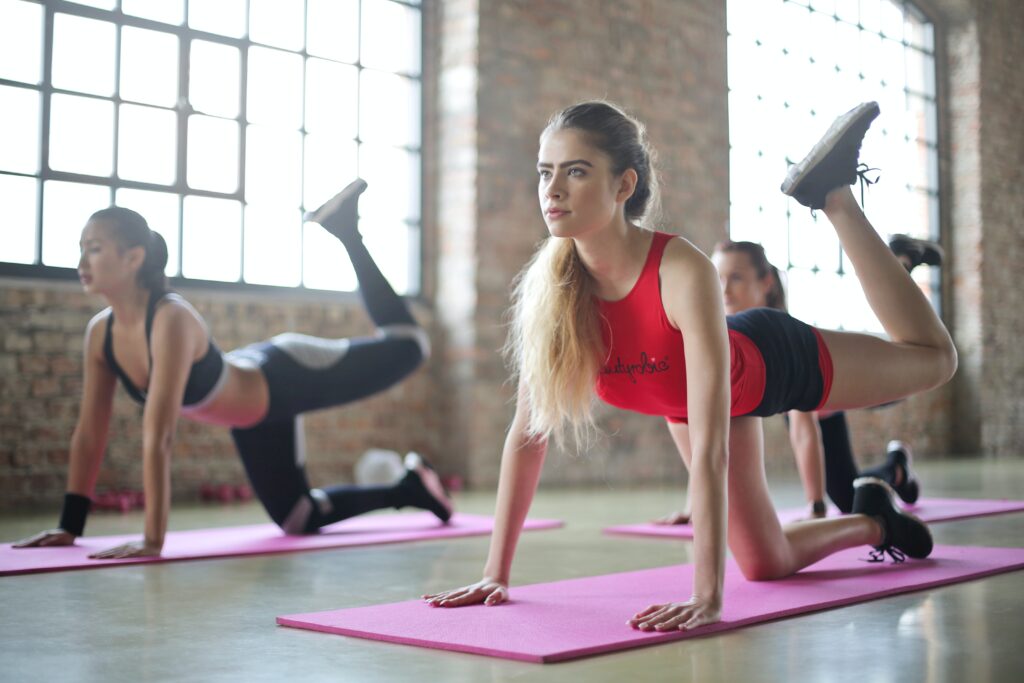
Strength exercises targeting the thigh muscles are essential to reduce thigh fat at home and for building lower body strength, stability, and overall functional fitness. One effective exercise for this purpose is the squat, which primarily engages the quadriceps, hamstrings, and glutes. By standing with feet shoulder-width apart, lowering the hips back and down while maintaining a straight back, and then pushing through the heels to return to a standing position, the thigh muscles are effectively activated and strengthened.
Another valuable exercise is the lunge, which targets the quadriceps, hamstrings, and glutes while also engaging the core for stability incredibly help to reduce the thigh fat at home. By stepping forward with one leg, lowering the body until the front knee is at a 90-degree angle, and then pushing off the front foot to return to the starting position, the thigh muscles are worked in a dynamic and functional manner. Incorporating these strength exercises into a well-rounded fitness routine can lead to increased muscle tone, improved athletic performance, and enhanced overall lower body strength.
VII. Maintaining Consistency and Progression

Maintaining consistency and progression are key factors in achieving long-term success and desired outcomes in any endeavor, including fitness and personal growth. Consistency refers to the commitment and dedication to regularly engage in the activities or behaviors necessary to achieve a specific goal. By consistently showing up and putting in the effort, whether it be sticking to a workout routine, practicing a skill, or following a study plan, individuals create a positive habit loop that reinforces progress over time. Additionally, progression involves gradually increasing the difficulty, intensity, or complexity of one’s efforts to continue challenging oneself and motivates one to reduce thigh fat at home. This can be done by gradually increasing weights, adding repetitions, extending workout durations, or taking on more advanced tasks. By maintaining consistency and progression, individuals create a positive cycle of growth, continuously pushing their limits, and adapting to new challenges. This approach not only yields physical or skill-based improvements but also enhances discipline, resilience, and self-belief, leading to sustainable long-term success helps to reduce thigh fat at home.
A. Importance of consistency in a thigh fat loss journey

Consistency plays a crucial role for long way grind which you have to go through to reduce thigh fat at home. When it comes to reduce thigh fat at home, including the thighs, consistent efforts are vital for achieving desired results. Consistency in following a balanced and calorie-controlled diet, combined with regular exercise targeting the thigh muscles, helps create a calorie deficit necessary for fat loss. By consistently making healthier food choices, controlling portion sizes, and being mindful of overall calorie intake, individuals can gradually reduce body fat, including in the thigh area.
Moreover, regular exercise, such as cardiovascular activities like running, cycling, or brisk walking, along with strength training exercises targeting the thigh muscles, can accelerate the fat-burning process while toning and strengthening the leg muscles and helps to reduce thigh fat at home. Consistency in sticking to a workout routine ensures that the body continually expends energy and stimulates metabolic processes that aid in fat loss. It’s important to note that consistency over time is key, as sustainable and long-lasting fat loss requires patience and commitment. By consistently adhering to a healthy diet and exercise regimen, individuals can achieve their goals of thigh fat loss, improve overall body composition, and enjoy the benefits of increased confidence, mobility, and overall well-being.
B. Tracking progress and adjusting the workout routine
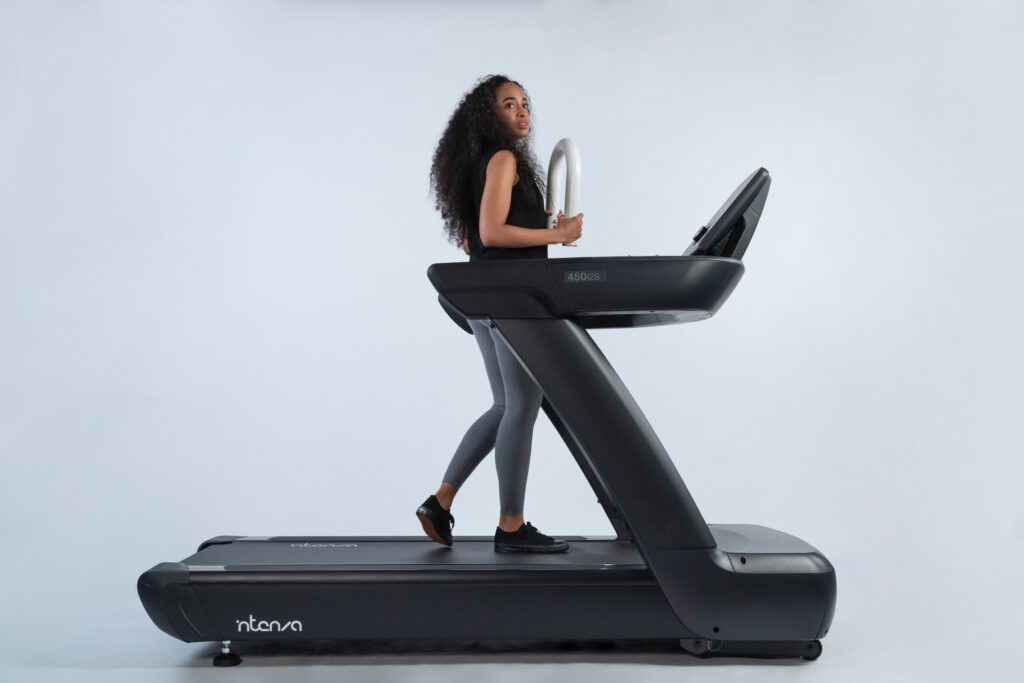
Tracking progress and adjusting the workout routine are crucial elements to reduce thigh fat at home and achieving optimal results in any fitness journey. By diligently monitoring and assessing one’s progress, individuals gain valuable insights into their strengths, weaknesses, and areas of improvement. Tracking can involve various metrics such as body measurements, weight, strength gains, endurance levels, or even subjective factors like mood and energy levels.
This information helps individuals understand what is working and what needs adjustment in their workout routine. It allows them to identify patterns, set realistic goals, and make informed decisions on how to modify their training program to reduce thigh fat at home. Adjusting the workout routine regularly is important to ensure continued progress and prevent plateaus. This can include changing exercise variations, increasing weights, adjusting repetitions and sets, altering rest periods, or incorporating new training methods altogether. By adapting the workout routine based on tracked progress, individuals can challenge their bodies, stimulate muscle growth, increase cardiovascular fitness, and avoid stagnation. This dynamic approach keeps the body responsive, maintains motivation, and maximizes the overall effectiveness of the fitness journey leading to reduce thigh fat at home.
VIII. Incorporating Lifestyle Changes to Reduce Thigh Fat at Home

Incorporating lifestyle changes is a powerful approach for achieving long-term success and holistic well-being. Instead of relying on short-term fixes or quick solutions to reduce thigh fat at home, adopting sustainable lifestyle changes promotes lasting transformation. This entails making intentional adjustments to various aspects of daily life, including diet, physical activity, stress management, sleep patterns, and self-care practices. By prioritizing a balanced and nutritious diet, individuals can fuel their bodies with the necessary nutrients and maintain a healthy weight.
Regular physical activity, whether through structured workouts or active hobbies, improves cardiovascular health to reduce thigh fat at home, builds strength, and boosts mood. Effective stress management techniques like mindfulness, meditation, or engaging in hobbies can promote mental and emotional well-being. Additionally, establishing consistent sleep patterns and practicing self-care activities, such as adequate rest and relaxation, helps to recharge and maintain optimal functioning and boost your courage to reduce thigh fat at home. By incorporating these lifestyle changes, individuals create a solid foundation for long-term health and wellness, fostering a positive and sustainable approach to living a fulfilling life.
A. Importance of overall lifestyle modifications to lose thigh fat
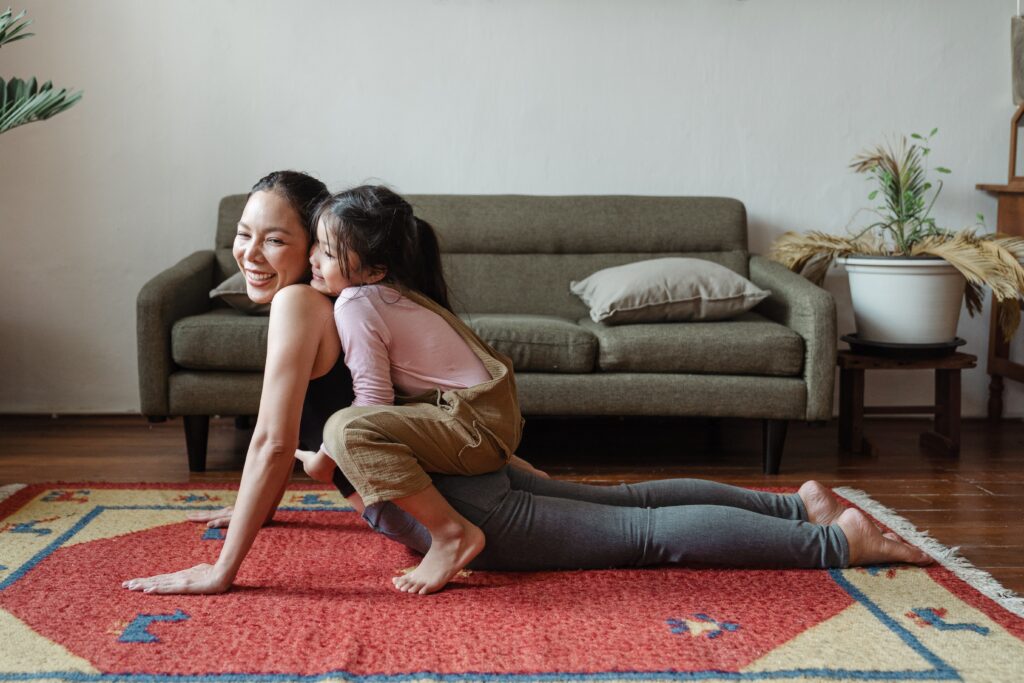
Overall lifestyle modifications are of paramount importance when it comes to achieving and maintaining optimal health and well-being. While short-term changes or temporary fixes may yield immediate results, incorporating sustainable lifestyle modifications offers long-lasting benefits to reduce thigh fat at home. By addressing multiple aspects of life simultaneously, such as diet, physical activity, stress management, sleep patterns, and self-care practices, individuals create a comprehensive approach to their well-being. These modifications have a synergistic effect, enhancing the overall impact on health and paved the way to reduce thigh fat at home giving you the courage for self love. For instance, adopting a balanced and nutritious diet not only nourishes the body but also supports physical performance and mental clarity.
Regular physical activity strengthens muscles, improves cardiovascular health, boosts mood, and aids in weight management. Effectively managing stress levels reduces the risk of various health conditions, enhances mental resilience, and promotes emotional well-being leads to reduce thigh fat at home. Prioritizing sufficient and quality sleep helps restore and rejuvenate the body, optimizing cognitive function and overall vitality. Self-care practices nourish the mind, body, and spirit, fostering self-love, relaxation, and inner balance. By implementing these comprehensive lifestyle modifications, individuals can experience a holistic transformation, leading to reduce thigh fat at home and improved overall health, increased energy levels, enhanced mental and emotional well-being, and a greater sense of fulfillment in life.
B. Tips for reducing sedentary behavior and increasing activity

Reducing sedentary behavior and increasing physical activity are crucial steps towards improving overall health and combating the negative effects of a sedentary lifestyle also helps to reduce thigh fat at home. Here are some effective tips to incorporate more movement into daily routines. Firstly, aim to take regular breaks from prolonged sitting or desk work. Set reminders to stand up, stretch, and move around every hour. Secondly, find opportunities for active transportation, such as walking or cycling instead of driving short distances. Thirdly, incorporate physical activity into leisure time by engaging in hobbies like dancing, gardening, or playing a sport.
Fourthly, prioritize regular exercise by scheduling dedicated workout sessions into the daily or weekly routine. Choose activities that are enjoyable and sustainable, such as brisk walking, jogging, swimming, or group fitness classes. Fifthly, embrace technology that encourages movement which leads to reduce thigh fat at home, such as fitness trackers or mobile apps that track steps and provide reminders to stay active. Finally, involve friends, family, or coworkers in physical activities to make them more enjoyable and increase accountability. By implementing these tips and making a conscious effort to reduce sedentary behavior as well as to reduce thigh fat at home while increasing activity levels, individuals can improve cardiovascular health, boost mood, increase energy, manage weight, and enhance overall well-being.
IX. Staying Motivated

When it comes to pursuing goals, whether they are related to fitness, or want to reduce thigh fat at home, career, education, or personal development, motivation serves as the driving force to overcome challenges and stay focused. To stay motivated, it’s important to set clear and realistic goals that align with personal values and aspirations to reduce thigh fat at home. Breaking larger goals into smaller, achievable milestones provides a sense of progress and keeps motivation high. It’s also essential to find inspiration and surround oneself with positive influences, whether it be through reading motivational books, following role models, or joining communities that share similar goals. Regularly reminding oneself of the reasons behind the pursuit of the goal and visualizing the desired outcome can help maintain motivation during difficult times.
Additionally, celebrating achievements along the way, no matter how small, provides a sense of accomplishment and encourages continued progress. Building a support network and seeking accountability partners can also provide valuable encouragement and help stay on track will also help to reduce thigh fat at home. Finally, it’s important to maintain a positive mindset and practice self-compassion, understanding that setbacks and obstacles are part of the journey and should be viewed as learning opportunities. By adopting these strategies and nurturing motivation, individuals can persevere, overcome challenges, and achieve their desired goals.
A. Setting realistic goals and expectations

Setting realistic goals and expectations is crucial for success and maintaining motivation in any endeavor including the journey to reduce thigh fat at home. It’s important to establish goals that are attainable and aligned with one’s abilities, resources, and time constraints. Unrealistic goals can lead to frustration, disappointment, and a loss of motivation. By setting achievable goals, individuals can experience a sense of progress and accomplishment, which fuels motivation and propels them forward. It’s also essential to consider the time frame in which the goals are to be achieved. Breaking down larger goals into smaller, manageable steps allows for a more realistic and sustainable approach. Moreover, setting realistic expectations involves understanding that progress may not always be linear and that setbacks and obstacles are a normal part of the journey. By acknowledging and accepting that there will be challenges along the way, individuals can maintain a resilient mindset and stay motivated despite temporary setbacks. Ultimately, setting realistic goals and expectations creates a solid foundation for success, ensuring that individuals can navigate their journey with determination, patience, and a positive outlook.
B. Celebrating achievements and staying positive

Celebrating achievements and staying positive are essential practices for maintaining motivation and cultivating a positive mindset and will help to reduce thigh fat at home by giving motivation. Recognizing and acknowledging one’s accomplishments, no matter how small, boosts self-confidence and provides a sense of pride. Celebrating achievements can take various forms, such as rewarding oneself with a small treat, sharing the accomplishment with loved ones, or taking a moment to reflect on the progress made. This positive reinforcement reinforces the belief in one’s abilities and encourages continued effort towards the desired goal. Additionally, cultivating a positive mindset involves focusing on the strengths and progress made rather than dwelling on setbacks or perceived failures. Embracing a positive perspective allows individuals to approach challenges as opportunities for growth and learning. It’s important to practice self-compassion and kindness towards oneself, understanding that setbacks are a natural part of the journey. By celebrating achievements and maintaining a positive outlook, individuals can sustain motivation, overcome obstacles, and continue progressing towards their goals with resilience and determination to reduce thigh fat at home.
X. Conclusion
In conclusion, to reduce thigh fat at home is an achievable goal with the right approach and consistent effort. By incorporating a combination of targeted exercises that focus on the thigh muscles, implementing a balanced and calorie-controlled diet, and adopting overall lifestyle modifications, individuals can effectively reduce thigh fat and improve their overall body composition. It is essential to stay motivated, set realistic goals, and track progress along the way to stay on track and make necessary adjustments. Remember, consistency and patience are key in any fitness journey, and with dedication and perseverance, significant changes can be achieved. By following these strategies and maintaining a positive mindset, individuals can embark on a successful thigh fat loss journey and enjoy the numerous benefits of improved fitness, increased confidence, and enhanced overall well-being. For more tips realted to lose thigh fat and beauty visit Beauty4Boost.




